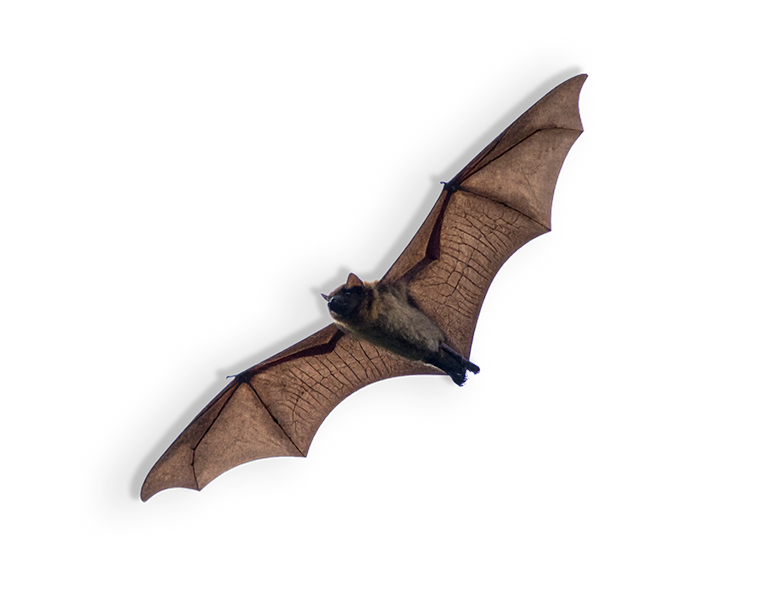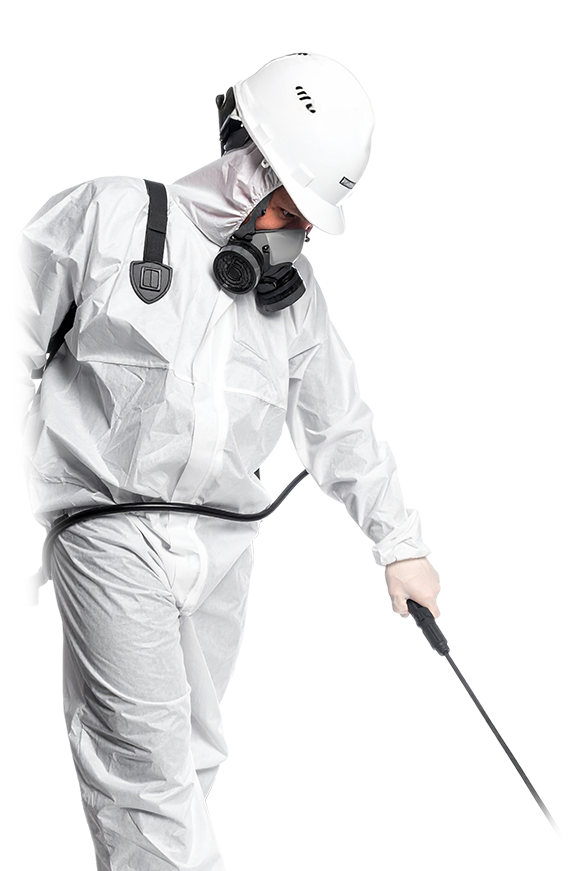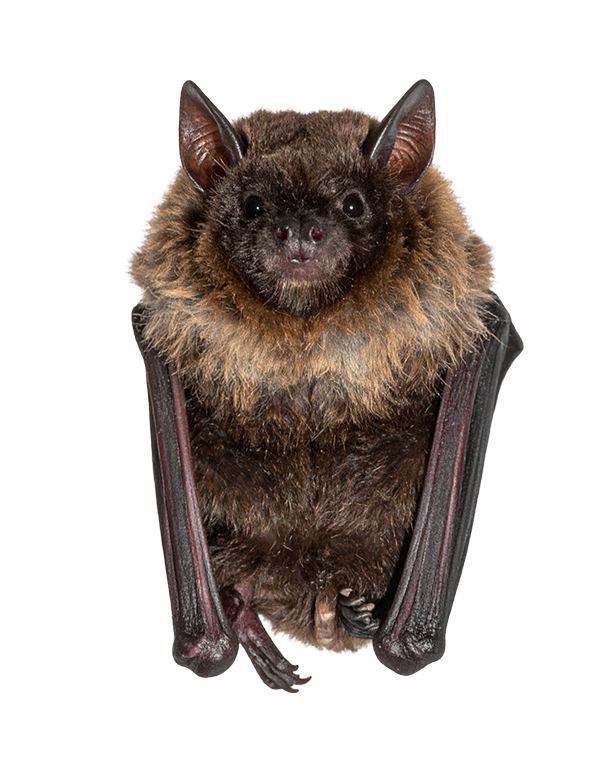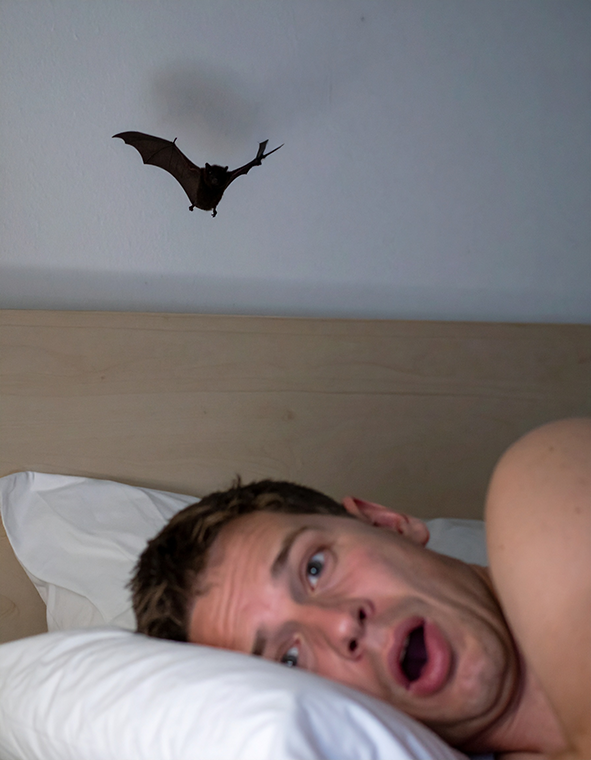give us a call (978) 724-8370
Bat removal and exclusion in Massachusetts is essential to protect both your home and the state’s vulnerable bat populations. Our certified experts use effective methods to remove bats, prevent re-entry, and preserve these important native species while reducing health risks to people and pets.
Loading content

While bats play a vital role in nature, they can pose serious health risks when entering homes or coming into contact with people and pets. Only licensed, qualified professionals should perform bat removal and exclusion, as improper timing or techniques increase the risk of exposure. Our specialists expertly locate and safely remove bats from homes and businesses, ensuring thorough clearance before normal activities resume. When necessary, we handle specimen collection for rabies testing, helping protect your family and community.
Bats can be difficult to find once inside because they hide in tight, confined crevices out of sight. The more personal belongings present, the harder it is to locate them. It’s critical to thoroughly clear all rooms of bats before allowing people and pets to resume normal activities. Our bat specialists have found bats hiding in a wide variety of objects and locations, requiring careful inspection and expert removal techniques.
Ultra Safe Bat Exclusion Experts keep bats out of buildings with specialized Eviction Devices, Bat Cones, All-Weather sealants, sheet metal, steel mesh fabric,customized screening, chimney and vent covers and other specialty products. If bats have already entered a structure we will extract or remove the bats safely, without harm, before performing the long-term exclusion work. Our bat exclusions preserve bats while protecting people and domestic animals.
Unlike rodents, bats do not gnaw or chew their way into structures. Bats seek out roosting sites by following air movement and temperature changes while flying around potential roosting areas. In the wild, bats typically roost in caves, tree hollows, rock crevices and other naturally formed structures.
In urban and suburban areas, bats often find suitable roosting sites in homes, attics and other structures occupied by people. Bats enter these buildings through existing gaps and openings ⅝ of an inch or larger.
Here in Massachusetts, winter weather conditions can cause structural damage to buildings over time. Snow and ice can expand, forcing building materials apart and creating the ideal entry points for bats to enter. It is important to have annual bat inspections to identify any existing or new potential entry points.
New England weather can wreak havoc on older homes and building in Massachusetts. It is not uncommon for seams and joints to expand over time allowing bats to enter a structure. Construction gaps left unsealed following construction can provide entry points for bats. Upper and lower rake boards, soffits, trim, dormer returns, roof and attic vents, chimneys, siding gaps and ridge vents are just a few of the areas we find bats entering building structures. “Bat Exclusion Materials” specifically designed for the safe removal and exclusion of bats are used to evict and seal bats out of the structure.

Bat Guano harbors dangerous organisms. A certified bat professional will clean-up the guano safely.
Ultra Safe Pest utilizes Industry-Specific HEPA vacuums to remove guano (bat-droppings) from contaminated areas. After removing guano and other debris, our licensed applicators apply EPA registered sanitizers and disinfectants to contaminated areas.
Rabies is a virus that can affect the brain and spinal cord. This virus is found in the saliva of an animal with rabies and can be spread to humans through a bite or scratch. Rabies cannot be cured, but it can be prevented.
When people think about bats, they often imagine things that are not true. Bats are not blind. They are not rodents and they are not birds. They will not suck your blood — and most bats do not have rabies. Because bats are mammals, they can develop rabies, but most do not have the disease.
You can’t tell if a bat has rabies just by looking at it; rabies can be confirmed only by having the animal tested in a laboratory. So be safe; never handle a bat!
In the U.S, most rabies in humans have been due to bat bites that were not recognized or reported. Bats make tiny teeth marks that are difficult to see so the bite may not be noticed. A healthy bat usually avoids people, but a rabid bat may be on the ground so people touch it. If there is any chance that someone has touched a bat, it should be captured and tested for rabies. Besides touching the bat, finding a bat in the room of an unattended child or anyone who is unable to give a clear history of whether they had direct contact with the bat (such as someone who was sleeping) is also considered a possible exposure. Bats flying overhead and bats that have not had contact with humans or animals do not pose a risk.
Most bats don’t have rabies. For example, even among bats submitted for rabies testing because they could be captured, were obviously weak or sick, or had been captured by a cat, only about 6% had rabies.
Just looking at a bat, you can’t tell if it has rabies. Rabies can only be confirmed in a laboratory. But any bat that is active by day or is found in a place where bats are not usually seen like in your home or on your lawn just might be rabid. A bat that is unable to fly and is easily approached could very well be sick.
Rabies is a fatal disease. Each year, tens of thousands of people are successfully protected from developing rabies through vaccination after being bitten by an animal like a bat that may have rabies. There are usually only one or two human rabies cases each year in the United States, and the most common way for people to get rabies in the United States is through contact with a bat.
Those people didn’t recognize the risk of rabies from the bite of a wild animal, particularly a bat, and they didn t seek medical advice. Awareness of the facts about bats and rabies can help people protect themselves, their families, and their pets. This information may also help clear up misunderstandings about bats.
Teach children never to handle unfamiliar animals, wild or domestic, even if they appear friendly. “Love your own, leave other animals alone” is a good principle for children to learn.
Wash any wound from an animal thoroughly with soap and water and seek medical attention immediately.
Have all dead, sick, or easily captured bats tested for rabies if exposure to people or pets occurs.
Prevent bats from entering living quarters or occupied spaces in homes, churches, schools, and other similar areas where they might contact people and pets

People often know when they’ve been bitten by a bat, but most types of bats have very small teeth which may leave marks that disappear quickly.
If you are bitten by a bat — or if infectious material (such as saliva or brain material if it is killed) from a bat gets into your eyes, nose, mouth, or a wound — wash the affected area thoroughly with soap and water and get medical advice immediately. Whenever possible, the bat should be captured and sent to a laboratory for rabies testing.
People can’t get rabies just from seeing a bat in an attic, in a cave, at summer camp, or from a distance while it is flying. In addition, people can’t get rabies from having contact with bat guano (feces), blood, or urine, or from touching a bat on its fur.
If you think your pet has been bitten by a bat, contact a veterinarian or your health department for assistance immediately and have the bat tested for rabies. Remember to keep vaccinations current for cats, dogs, and other animals.

Bats don’t wait, and neither should you. Our 24/7 emergency bat removal team is ready to respond fast and keep your home safe—anytime, anywhere.
If you woke up because a bat landed on you while you were sleeping or if you awakened and found a bat in your room, you should try to safely capture the bat and have it tested. The same precautions should be used if you see a bat in a room with an unattended child, or see a bat near a mentally impaired or intoxicated person.
The small teeth of the bat can make a bite difficult to find. Be safe and in these situations, try to safely capture the bat, have the bat tested, and seek medical advice.
Confine the bat to a room by closing all doors and windows leading out of the room except those to the outside. The bat will probably leave soon. If the bat doesn’t leave, contact wildlife control or animal control agency for assistance. If help isn’t available, follow the steps to capture a bat.
If a bat is in your house and you have any question about whether the bat has been in contact with people or pets, you will want to have the bat captured and tested. Call Ultra Safe for assistance. We’re here to help, 24/7.
